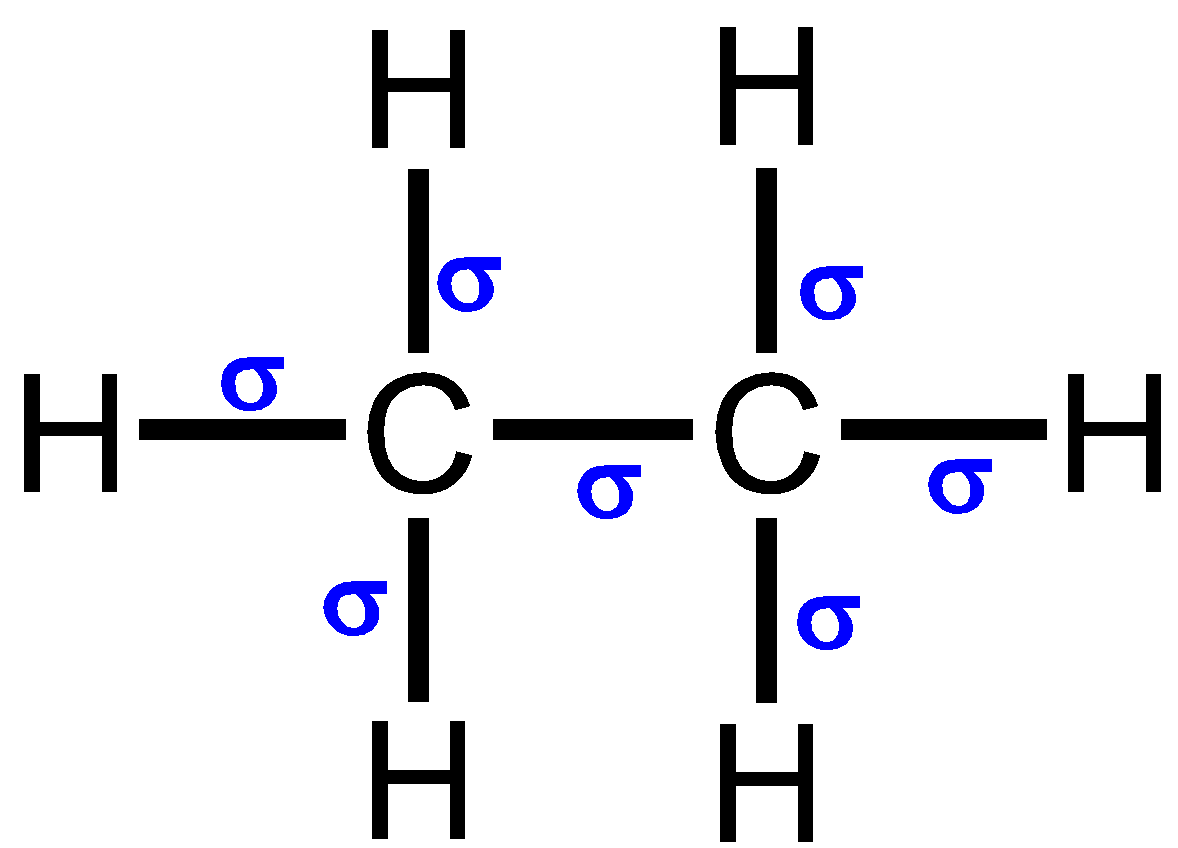
The sigma bond energy of \[{\text{C}} - {\text{H}}\] bond in \[{{\text{C}}_{\text{2}}}{{\text{H}}_{\text{6}}}{\text{}}\]is:
A.99 kcal
B.140 kcal
C.200 kcal
D.60 kcal
Answer
566.4k+ views
Hint: The first bond formed between any two atoms is the sigma bond. The sigma bond energy is merely the energy required to form or break that bond.
Complete step by step answer:
The sigma bond is the strongest covalent bond formed by the head on overlap between the atomic orbitals. They are simply the first bond formed between any two atoms. The ${\text{C}} - {\text{H}}$ bond in ethane ${{\text{C}}_{\text{2}}}{{\text{H}}_{\text{6}}}{\text{}}$ is known as the sigma bond. It is denoted as σ. The structure of ethane s shown below:

The energy required to form the sigma bond or break that bond is known as sigma bond energy. They are generally called bond dissociation energy. It can be expressed in kcal or kJ/mol. The bond energy is usually calculated at the room temperature. The stability of a bond is directly related to its bond energy. As the bond energy increases stability increases. This in turn decreases the reactivity of the bond. They are known to depict the strength of the chemical bond.
The sigma bond energy in \[{{\text{C}}_{\text{2}}}{{\text{H}}_{\text{6}}}{\text{}}\] is 99 kcal. They are calculated from the spectroscopic determination of the energy levels. The ethylene has a bond dissociation energy of 174 kcal/mol.
So, the correct option is A.
Note:
The sigma bond energy can also be expressed in kJ/mol. The conversion factor is given below:
1 ${\text{ kcal/mol = 4}}{\text{.184 kJ/mol}}$
Thus, the sigma bond energy in \[{{\text{C}}_{\text{2}}}{{\text{H}}_{\text{6}}}{\text{}}\]= 99 kcal = 413 kJ/mol.
Complete step by step answer:
The sigma bond is the strongest covalent bond formed by the head on overlap between the atomic orbitals. They are simply the first bond formed between any two atoms. The ${\text{C}} - {\text{H}}$ bond in ethane ${{\text{C}}_{\text{2}}}{{\text{H}}_{\text{6}}}{\text{}}$ is known as the sigma bond. It is denoted as σ. The structure of ethane s shown below:

The energy required to form the sigma bond or break that bond is known as sigma bond energy. They are generally called bond dissociation energy. It can be expressed in kcal or kJ/mol. The bond energy is usually calculated at the room temperature. The stability of a bond is directly related to its bond energy. As the bond energy increases stability increases. This in turn decreases the reactivity of the bond. They are known to depict the strength of the chemical bond.
The sigma bond energy in \[{{\text{C}}_{\text{2}}}{{\text{H}}_{\text{6}}}{\text{}}\] is 99 kcal. They are calculated from the spectroscopic determination of the energy levels. The ethylene has a bond dissociation energy of 174 kcal/mol.
So, the correct option is A.
Note:
The sigma bond energy can also be expressed in kJ/mol. The conversion factor is given below:
1 ${\text{ kcal/mol = 4}}{\text{.184 kJ/mol}}$
Thus, the sigma bond energy in \[{{\text{C}}_{\text{2}}}{{\text{H}}_{\text{6}}}{\text{}}\]= 99 kcal = 413 kJ/mol.
Recently Updated Pages
Why are manures considered better than fertilizers class 11 biology CBSE

Find the coordinates of the midpoint of the line segment class 11 maths CBSE

Distinguish between static friction limiting friction class 11 physics CBSE

The Chairman of the constituent Assembly was A Jawaharlal class 11 social science CBSE

The first National Commission on Labour NCL submitted class 11 social science CBSE

Number of all subshell of n + l 7 is A 4 B 5 C 6 D class 11 chemistry CBSE

Trending doubts
Differentiate between an exothermic and an endothermic class 11 chemistry CBSE

10 examples of friction in our daily life

One Metric ton is equal to kg A 10000 B 1000 C 100 class 11 physics CBSE

Difference Between Prokaryotic Cells and Eukaryotic Cells

1 Quintal is equal to a 110 kg b 10 kg c 100kg d 1000 class 11 physics CBSE

State the laws of reflection of light




